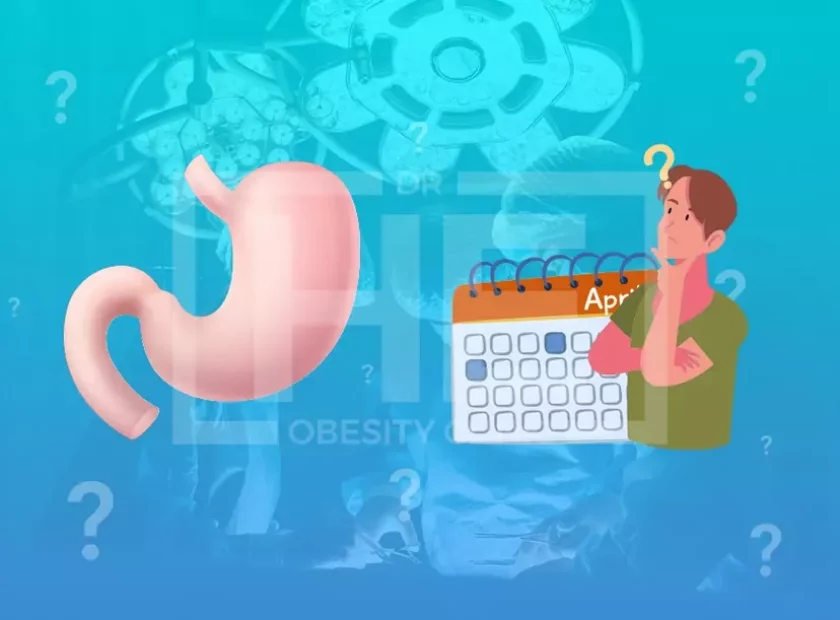
Is Gastric Sleeve Surgery Reversible? Sleeve gastrectomy is irreversible. Since a large part of the stomach is removed from the body during the operation, this type of operation is not reversible. Because the stomach is cut from side to side, leaks and bleeding can sometimes occur on this suture line.
Since the cut part of the stomach is removed from the abdomen, it is not a reversible operation. But the stomach can be bypassed and turned into a duodenal switch.
Sleeve gastrectomy is a surgical procedure in which a large part of the stomach is removed by leaving a 100-150 ml stomach tube. During the procedure, a certain part of the stomach is surgically removed and a tube-shaped stomach is left behind.
In addition, the feeling of hunger in the patient decreases because the part of the stomach that secretes the hunger hormone is removed. In other words, the feeling that the stomach is full prevents overeating. The operation of tubal gastric surgery is restrictive, the absorption of nutrients is not impaired by this method.
Since the absorption of food continues in the same way, the patient does not need to take auxiliary vitamin or mineral supplements. The implementation of the tube stomach method is relatively easier compared to other types of bariatric surgery.
The success of tube stomach surgery is permanent; however, it is of great importance that this method is applied to the right people. The dietician’s task here is to prescribe food to patients. Radiological control should be applied to the patient 24-48 hours after the operation.
This application is a radiological examination that reveals whether there are complications after surgery. It should be remembered that the tube stomach operation and its aftermath require close follow-up by a doctor.
Patients who underwent gastric tube surgery on the first, second, fourth week, 3, 6, 9, 12, 18 and 24 months should definitely not disrupt their control.
How to Reverse Gastric Sleeve?
How to reverse the gastric sleeve, there must be necessary reasons for this. Because these surgeries are risky, and reversal is not recommended unless there is a very important reason.
There are no international corporations implanted with the sleeve gastrectomy, as there is with the adjustable sleeve gastrectomy, and there is no difficult and complicated intestinal rearrangement with the gastric bypass.
After a plausible recovery, the majority of patients are able to eat a diverse diet, including meats and fibre vegetables. The sleeve gastrectomy, unlike the expandable gastric band and the gastric sleeve, is a permanent procedure that cannot be reversed.
Heartburn that is severe and unrelenting. After gastric sleeve surgery, a small percentage of patients may experience severe, unrelenting heartburn that does not respond to powerful antacids. This is most common in patients who had severe daily heartburn prior to undergoing the gastric sleeve procedure.
When all other options have been exhausted, we may recommend converting the gastric sleeve to a gastric bypass procedure, which has been shown to improve heartburn symptoms in a small percentage of patients.
Insufficient weight loss: Patients who have lost insufficient weight after gastric sleeve surgery have the option of undergoing a second stage procedure, such as the duodenal switch, which allows them to lose more weight.
Is It Safe to Reverse Gastric Sleeve Surgery?
Decreased blood float and the presence of scar tissue are a number of the elements that growth the complexity and danger of a bariatric surgical procedure reversal. Although there are numerous dangers worried in a surgical procedure reversal, some research display fantastic consequences for sufferers who underwent the procedure.
However, different forms of reversal surgical procedures are taken into consideration risky and impractical despite the fact that they may be undone as a minimum in theory.
The cause at the back of that is that re-running a tissue that became already subjected to a preceding surgical operation now no longer best reasons harm to the affected systems however additionally will increase the dangers of bleeding.
Scar tissue from preceding surgical procedures additionally makes it tough for running surgeons to look or get admission to the ordinary tissue. This makes it greater tough for staple strains and suture strains to heal well after a repeat surgical procedure.
Although different bariatric surgical procedures are reversible, they create excessive danger and complexity that want to be mentioned and deliberate together along with your health care provider and a group of healthcare professionals.
Besides the surgical dangers of reversing a bariatric surgical procedure, you growth your probabilities of gaining lower back maximum of the load misplaced throughout the preliminary surgical procedure. Before thinking about a bariatric surgical procedure reversal, its miles crucial to take into account different higher options to copy surgical procedure.
Does a Gastric Sleeve Really Stay in Forever?
You’ve probably wondered, “Does a gastric sleeve really stay in forever?” The answer to that question depends on your circumstances. Those who have had the procedure are not necessarily satisfied with the results, and you might consider undergoing revision surgery.
There are fewer risks involved in a revision procedure, but you should expect to spend one less day in the hospital. And because of the way the procedure works, you’ll be required to change your eating habits drastically for a while.
A gastric sleeve is a surgical procedure that removes a portion of your stomach. This part of the stomach is distended after you eat, and it can hold about two to four liters of food.
During the procedure, gas and liquids are removed. About 80% of your stomach is removed. A small incision is made through which the surgeon removes it.
After a gastric sleeve, your body will no longer process food in the same way. This means that you will need to exercise in order to maintain your new weight loss. Although you may lose a lot of weight during the first few months, you can maintain your weight after a year or two.
Follow-up visits will allow you and your surgeon to make sure that you are following the diet and health plan. If you have any problems after the surgery, your surgeon will make sure that you have a proper treatment plan.
After a gastric sleeve procedure, you should expect a week or two of recovery time. However, you’ll be on a liquid diet for the first week after the procedure.
You’ll need to drink at least 64 ounces of water per day, and take vitamin supplements for a few weeks. After that, you should be back to eating solid foods, but you’ll need to eat small portions for the rest of your life.




